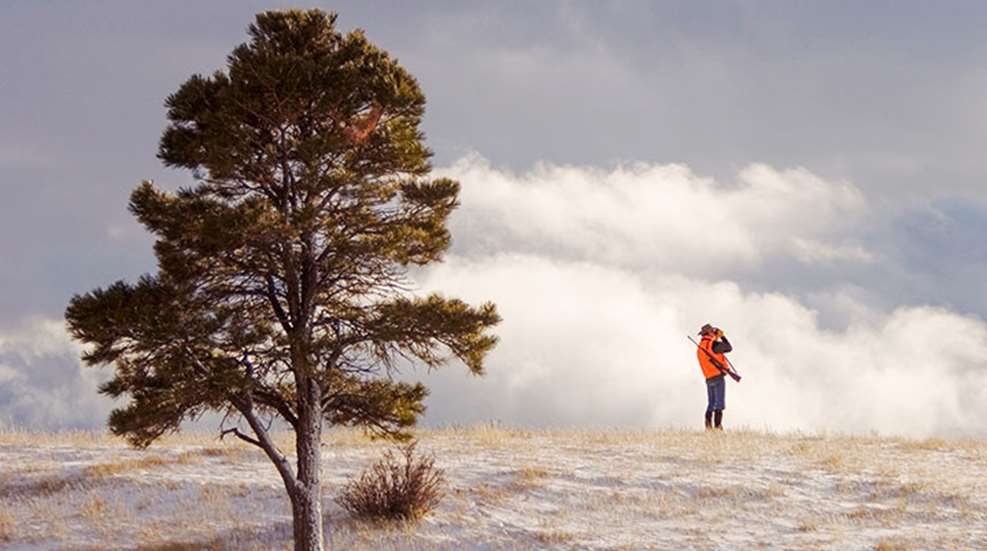
Elk hunts, especially public-land hunts in a general unit, include a high failure rate. I know. I have invested thousands of dollars in elk lotteries with more than my share of disappointing results. The stats from Colorado, home to the nation’s largest elk population, illustrate this point. In 2020, 212,667 hunters spent more than 1.1 million recreation days pursuing elk with archery tackle, muzzleloaders and modern firearms. Combined, this elk army felled 39,014 bulls, cows and calves. That equals an overall success rate of a mere 18 percent. Such a number may sound disheartening, but many of the general archery units I hunt post success rates barely making it into the double digits.
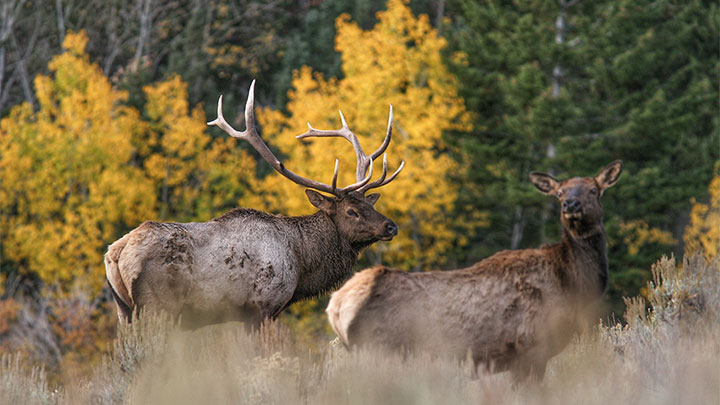
Failure will likely hold a place in public-land elk hunting throughout our generation and beyond. Nevertheless, failures can help you down the road to success. Think of any failures as merely points on a path to success—and to get on that path you need to avoid the top reasons you will fail this elk season. More than enough factors will help you fail on a public-land, DIY elk hunt, but by avoiding the obvious, you will increase your odds to escape the failure success of elk stats everywhere.
1. Forget to Apply for a Premium License
What? You forgot to apply for a premier license in a premium unit? Worse yet, you forgot to purchase preference points or bonus points to build toward that elk hunt of a lifetime? Ughhh! License gaffes can set you back year after year. They’ll either cancel your “attempt to fail” or put you into a higher category of failure than an over-the-counter (OTC) license in a general unit.
The license application universe for elk is vast and as confusing as current tax law. Deadlines that vary from January through summer along with systems that make you purchase a hunting license to even apply, plus extended windows to buy preference points all mean you must be as organized as Melvil Dewey, the Dewey Decimal library organization system creator.
Making licensing reminder notes on your computer calendar while studying application intricacies of your states of choice gives you lead time to meet deadlines. If you have failing grades in this department, hire a professional. Businesses, like Worldwide Trophy Adventures and Huntin’ Fool, do the paperwork on time, and WTA even floats money for application fees.
My personal plan includes applying for a handful of premium hunt units annually and, while waiting patiently, hunting researched general units. So far, my luck on premium draws has been infrequent, as expected, but my success in general units is increasing exponentially thanks to the “failure learning curve.”
2. Show Up Out of Shape
When you do draw a prized license you better be in shape. Most public-land elk live far from busy roads. Unlike posh, private-ranch elk hunts where vehicles can chauffeur you to the doorstep of elk, no one will help you get to the elk on public land.
You may utilize an ATV or e-bike to shuttle you to a launch a site, but footwork takes over from there. Elk use miles of expanse, vertical terrain and rugged topography as a “moat defense.” They separate themselves from dusty and muddy routes frequented by the nimrod crowd. You must be in shape to reach these sanctuaries, to return nightly (if you do not pack along your camp) and to extract an entire elk from the backcountry on your back. You need to be in above-average shape to maintain daily physical abuse to keep up with these mountain cross-country champs.
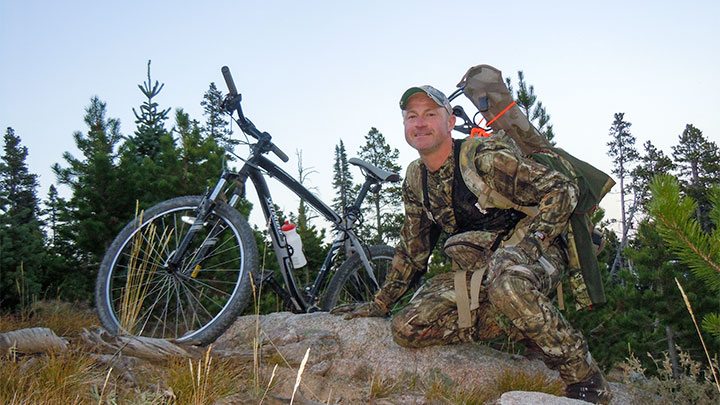
Before you purchase a gym membership, get the green light from your physician. You do not need to be in WWE shape. You do need to be able to hike up to 8 miles daily and to pack 30 to 80 pounds (depending on hunt details or success)—and you must keep up that grueling pace for the extent of your hunt.
3. Use Bargain Gear
Despite the appearance of many elk hunters garbed in the latest camouflage and looking like a Cabela’s fall advertising campaign, elk hunters seem to still fall behind in gear planning. It is not uncommon to see someone dressed in $600 worth of high-tech camouflage and still toting around a daypack that could hardly handle an all-day treestand sit in Missouri. Your daypack may be able to handle layers, lunch and hydration, but on a hot afternoon it needs to also transport nearly 100 pounds of meat back to the trailhead.
What resides in the recesses of a pack also oftentimes receives a failing grade. You should be prepared for everything while hunting remote locations, especially in the vastness of the West. First aid, emergency shelter, fire-starting material, food, water, navigation and communication need to be procured and practiced. Help could be hours away. In designated wilderness areas, an emergency extraction by helicopter may not be allowed due to regulations. Ditch the daypack and acquire a proper-sized pack and stock it with survival necessities.
4. Sleep Comfortably Miles from the Elk
The abbreviated definition of logistics is the “implementation of a complex operation”: that describes elk hunting in a nutshell to me. Elk hunting may not be as complex as Elon Musk’s Mars mission, but it does entail many working parts supporting a fluid situation. Success hinges on you executing manager duties effectively and efficiently. You cannot launch an effective offensive by wasting time traveling hours to and from the hunting location, while losing sleep or while minding camp. Elk could care less that you could not get your fancy RV close to the trailhead or that your motel room is an hour’s drive from the hunting area. They lose no sleep while you travel long distances between a hunt spot and a camp that requires constant maintenance.
To avoid failure, camp close to the action. It minimizes drive time and maximizes re-energizing sleep. Become a minimalist when it comes to camp complexities. The more time you waste with creature-comfort matters, the less time you have to hunt elk much less keep up with a mobile elk herd that constantly evades the pressures of public-land hunters.
Although I spend considerable time in backcountry tents and bivy where needed, I typically grind my old horse trailer up mountain trails to park it as near as possible to the action. This allows me to return to a base of operations that is a relatively civilized setting where I can recharge.
5. Learn to Navigate Later
Knowing the country requires scouting. To scout (and later, to hunt the area) you need a solid grasp of all navigational tools. Hunting apps, GPS units, maps, a compass and even the stars all come into play while navigating with confidence in the backcountry.
Some settings allow you to navigate with ease due to their vast views. Others require calculated moves for efficiency and safety. Even terrain that allows you to see mountains and canyons could become confusing if rain, snow or fog move in and obstruct views. And if you descend into a canyon of heavy timber everything could instantly look the same.
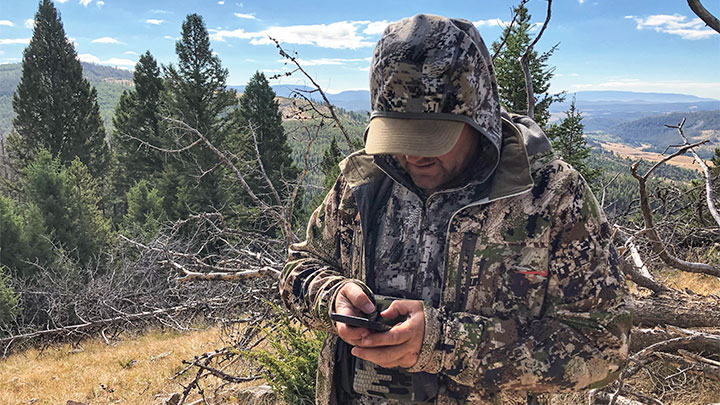
Of course, elk alone could cause navigation questions. Following bugles and sign has taken me to more than one hot spot, but it also grinds you quickly into new country that eventually you need to leave. By dropping pins and waypoints, you can focus on looking for your quarry. Later, the e-breadcrumbs can lead you home.
You must be skilled in your primary means of navigation and any backup means because the fact is anything mechanical or digital will fail. If batteries die or water fries a circuit, a paper map and a compass and knowledge of nature’s compass points still allow you to continue navigating. I refer to the North Star almost every morning while keeping a course to rendezvous with elk traveling at dawn. A look up saves me time from pulling out my hunting app for a quick reassurance I am on the right path.
6. Assume You’ll Find Elk Anywhere
To avoid failure on an already stressful public-land elk hunt, you require elk. Finding elk, even in units thriving according to wildlife agency surveys, can be downright taxing. Modern elk herds are transforming away from eons of natural movement. Instead of slowly migrating from summer habitat to autumn or winter habitat, or waiting for snow to force their movement, elk take the initiative earlier.
More and more properties across elk country are being purchased and shut down to general hunting via a knock on the door, and some properties do not allow hunting at all. Sure, many elk hunters comb private land on a “pay-to-play access,” but public-land hunters far outnumber them. All of this unintentionally creates refuge for elk. Elk soon realize where to find the sanctuary offerings and hustle to these lands at the first hint of pressure.
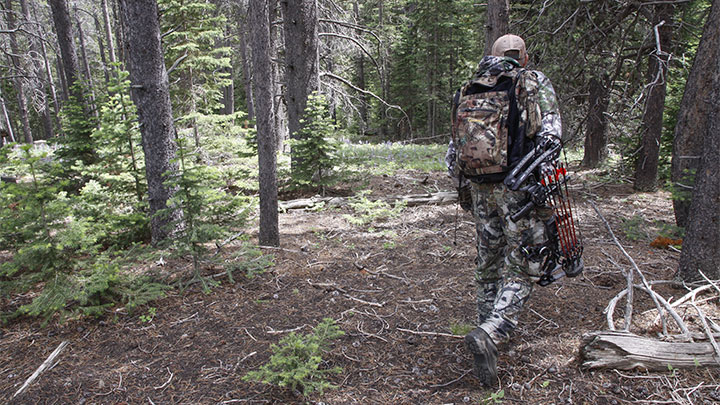
Understanding the hidden or remote safe havens for elk keeps you in public-land elk densities longer. Typically, elk keep a buffer of rugged country between themselves and humanity, or hold up a mile or more away from roads allowing motorized access to their country. Look for parcels of rugged country void of roads and scour such areas for elk sign.
Another good strategy is to locate private lands where elk seek refuge then hunt the border country where animals may wander back onto public land. In these situations, hunt far enough from any border to ensure an elk you may shoot does not escape back to private land, causing even more grief than watching elk feed lackadaisically across a fence.
7. Search for a Social Media Bull
One rule I follow on most public-land hunts, especially in general units with hunting competition, is to never pass on a bull. If you draw a once-in-a-lifetime tag, you can break that rule, but when you have a week to get the job done in units with success rates in the teens, shoot when you see antlers.
The same rule applies for cow elk. A cow can be warier than a lot of bulls. When a herd of cows and calves feeds into range, pick the healthiest-looking of the bunch and fill your freezer.
I have followed that rule (almost religiously) for the past decade. While hunting general units, I can count on one good opportunity, at most, at a branch-antlered bull. In a general hunt unit, you will likely see elk, but seeing elk and having a shooting opportunity are two different scenarios. Fortunately, with elk numbers rising and herd sex ratios expanding, the odds are good the one bull you might encounter could be a 6x6. Six of my last seven bulls have been mature bulls sporting a 6x6 frame and none came from units under strict elk and hunter management. Forget about 500 "likes" on Facebook. Think about a winter supply of venison complemented with a hat rack.
8. Keep Up with the Joneses
Humans want to be part of a group. Whether golfing, barbecuing and even hunting, we tend to seek out each other. It could be for simple social interaction, security or another instinctive bond, but the attraction is real. Add to this the fact management agencies love to crowd recreationists together in camping or trailhead access points and you get a crowded hunting atmosphere.
Avoid failure by refusing to keep up with the Joneses whenever possible. Crowds mean competition for limited elk resources—and elk learn to avoid crowds. Follow their lead. Although you may be forced to camp in an assigned area, most national forests and Bureau of Land Management properties allow primitive camping. Skip the campfire and bivy away from crowds nearer to the action.
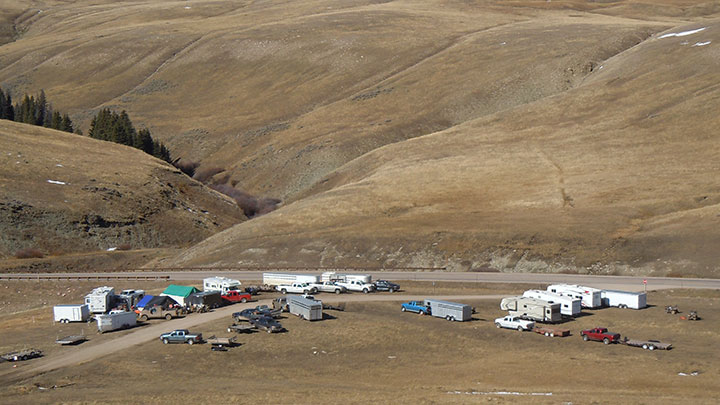
Although it never hurts to share information whenever possible, crowded public facilities indicate crowds of hunters nearby. In addition to primitive camping away from busy encampments, access hunting areas at alternate sites rather than chosen trailheads. Entering from a stretch of two-track or the opposite side of a mountain helps you avoid the cluster of hunters using a specific trail. The elk will also be avoiding the Joneses trail cluster whenever possible.
9. Stay One Step Behind
Following and not leading is guaranteed failure. Following elk is going to occur, but if you discover a pattern, learn to be proactive and be where the elk want to be at the end of their run. Elk are cursers via evolution. Their long legs help. With those legs they change course speedily and efficiently in escape, regardless of terrain. With heads held high, they can keep tabs on danger while jogging great distances.
Even when elk are not fleeing, they move hastily. If you begin your morning behind the elk, expect to lose them by midmorning. A better plan is to be where the elk want to be when the brunch hour rings for the sophisticated populous. My strategy is to determine where elk want to bed and wait for them. This commonly requires me to ascend to high basins in the morning darkness—as opposed to where elk may feed at night.
Bugles announce the intentions of moving elk at dawn and give me notice to adjust as elk climb in my direction. I have tagged several bulls that simply walked into my lap or required just a nudge of calling to step into an opening for the finale.
10. Follow Tradition Rather Than Common Sense
The days of setting up and waiting for a bull to come to your calls have passed. Sitting tight and calling in traditional fashion could bring in a curious, silent bull, but being proactive is a more realistic approach to elk country. Traditions are good, but never forget you’re capable of using common sense. Sometimes, you need to improvise.
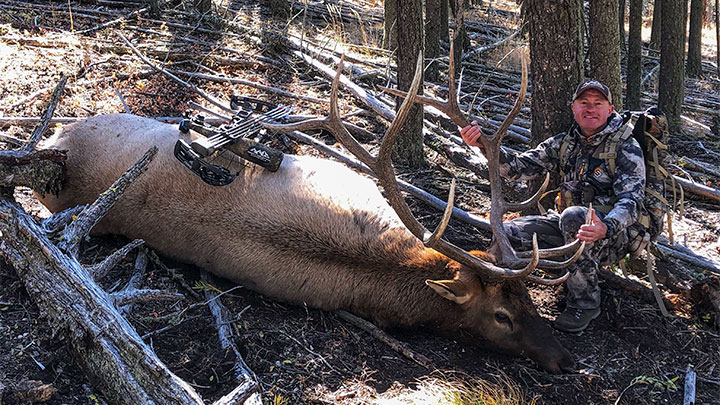
Educated, savvy elk quickly deduct shenanigans are afoot when elk sounds remain stationary, plead with a constant message or are louder than a tornado siren in Kansas. Elk generally call as they move into the wind, so you need to constantly adjust your position to keep wind angles slightly in your favor as you move to intercept. If you do decide to hit the bull with calls, consider cow calls first as they are less intimidating than an all-out bugle. Some bulls may only respond to bugles so keep the conversation going and match your calls to the enthusiasm of the responding bull. In the case where a bull requires no jumpstart to continue its bellowing, use the vocalizations as a homing beacon and slip in close for a possible shot on an occupied herd honcho.
Bonus Tip: Use a Decoy
When you call to any animal, whether it’s a bull or a gobbler, it expects to eventually see who is doing the calling. Sometimes the animal walks into your ambush blindly, but oftentimes it hangs up just out of shooting range with an outstretched neck as it seeks the ruckus maker.
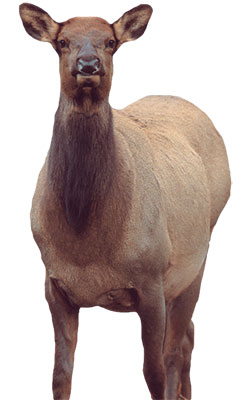
To avoid having a bull hang up just out of shooting range, provide it with a confidence boost: Let it see elk via a decoy.
Calls, combined with the visual stimulus of a decoy, have the potential to be a finisher in the hard-fought game of public-land elk hunting. This strategy works best in archery season. (It could be a bullet magnet in rifle season, so leave the decoy at home when wearing blaze orange.) If someone approaches your decoy, announce your presence to them in a calm, loud voice.
A bulky, clumsy and noisy decoy can be replaced with a folding model like those from Montana Decoy Company. These lightweight, compact and realistic decoys can be easily packed into the backcountry and deployed as needed. The trouble-free decoys are constructed using high-definition images of elk, spike bulls and cows. They come in a variety of stances depicting faces, rumps and feeding postures. They unfold instantly, and stakes maintain the shape of the animal, plus keep it in place even if you need to slip away from the decoy to intercept a circling bull.




































